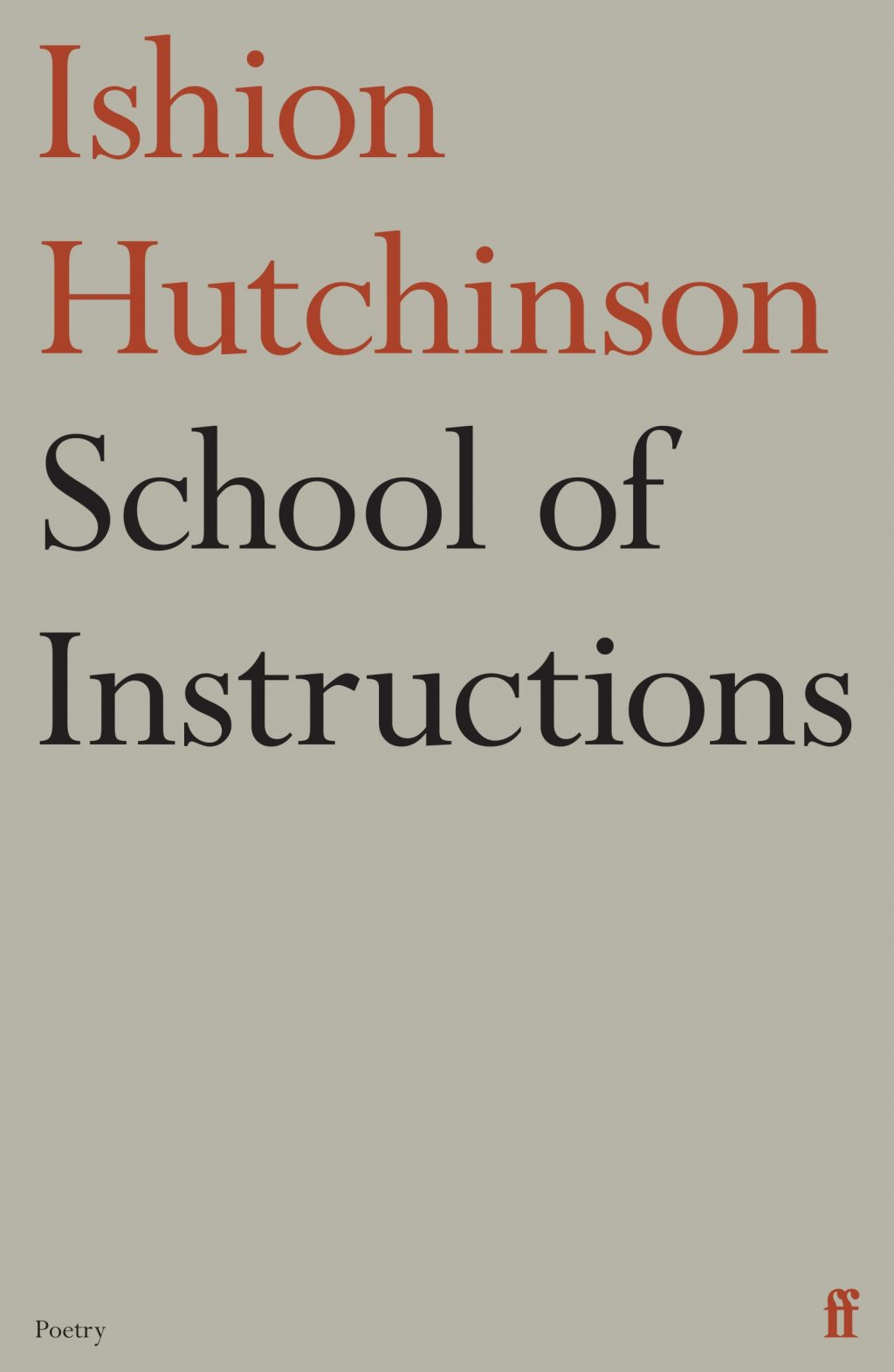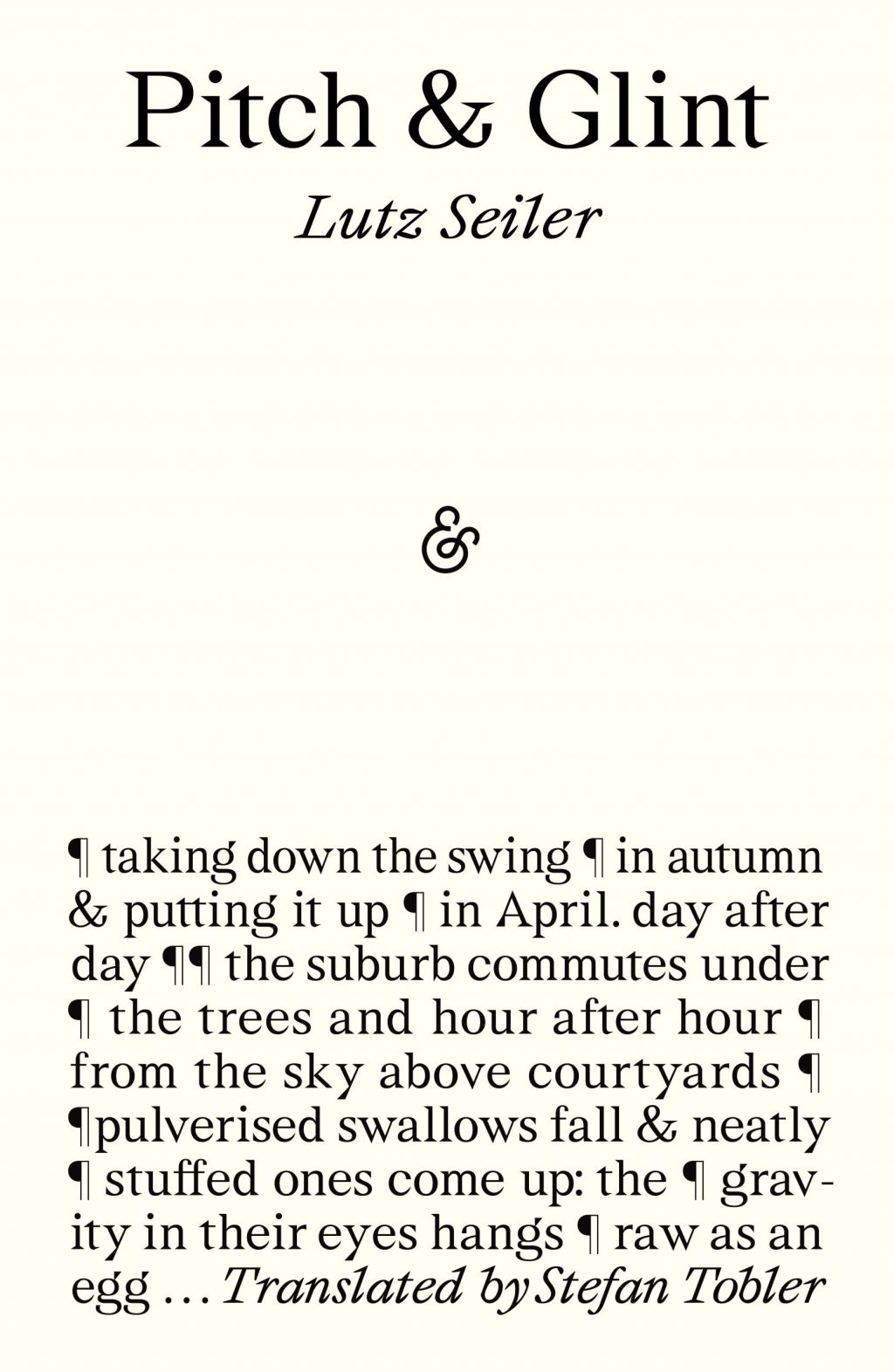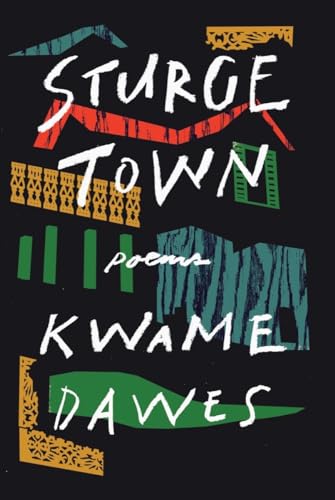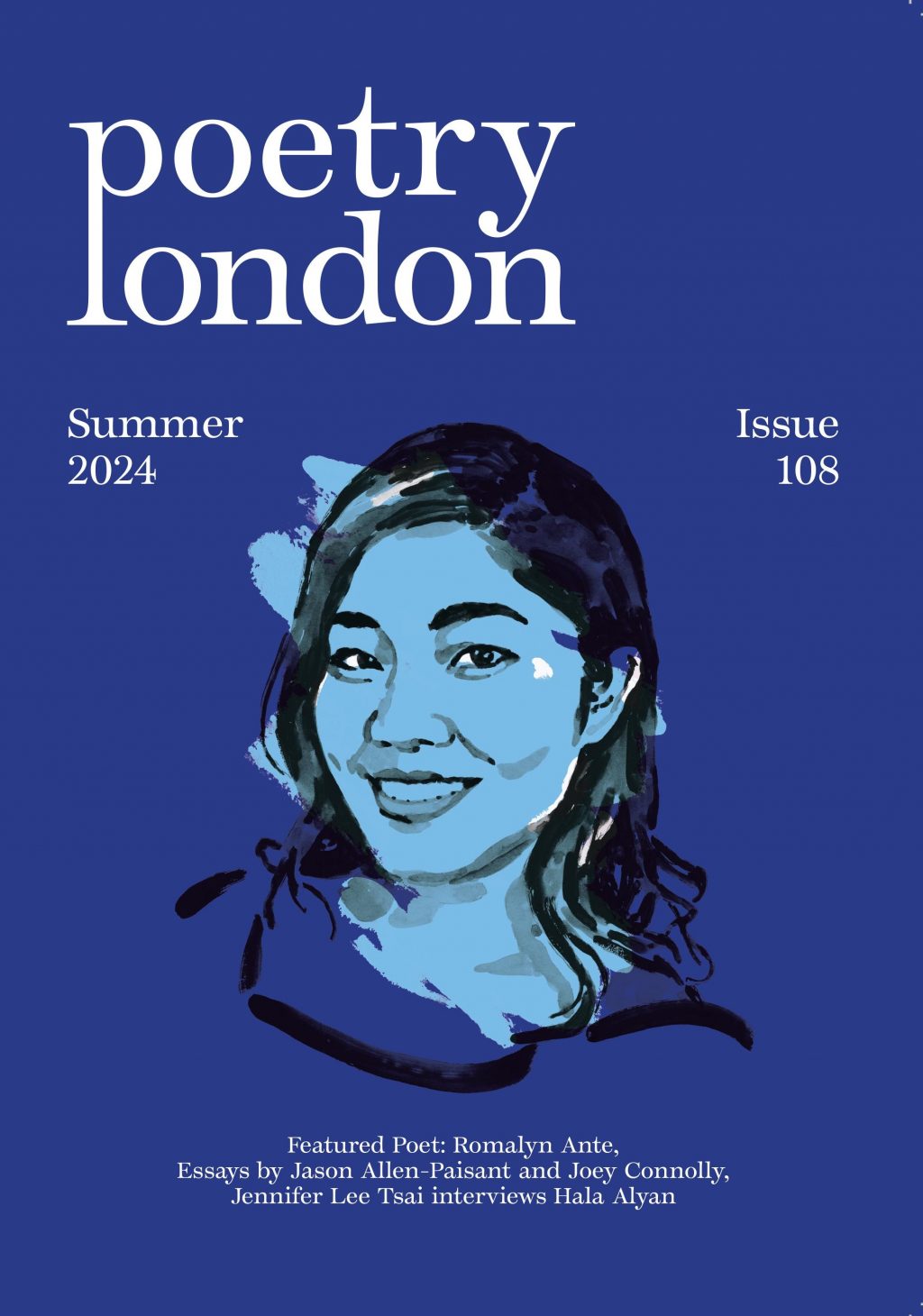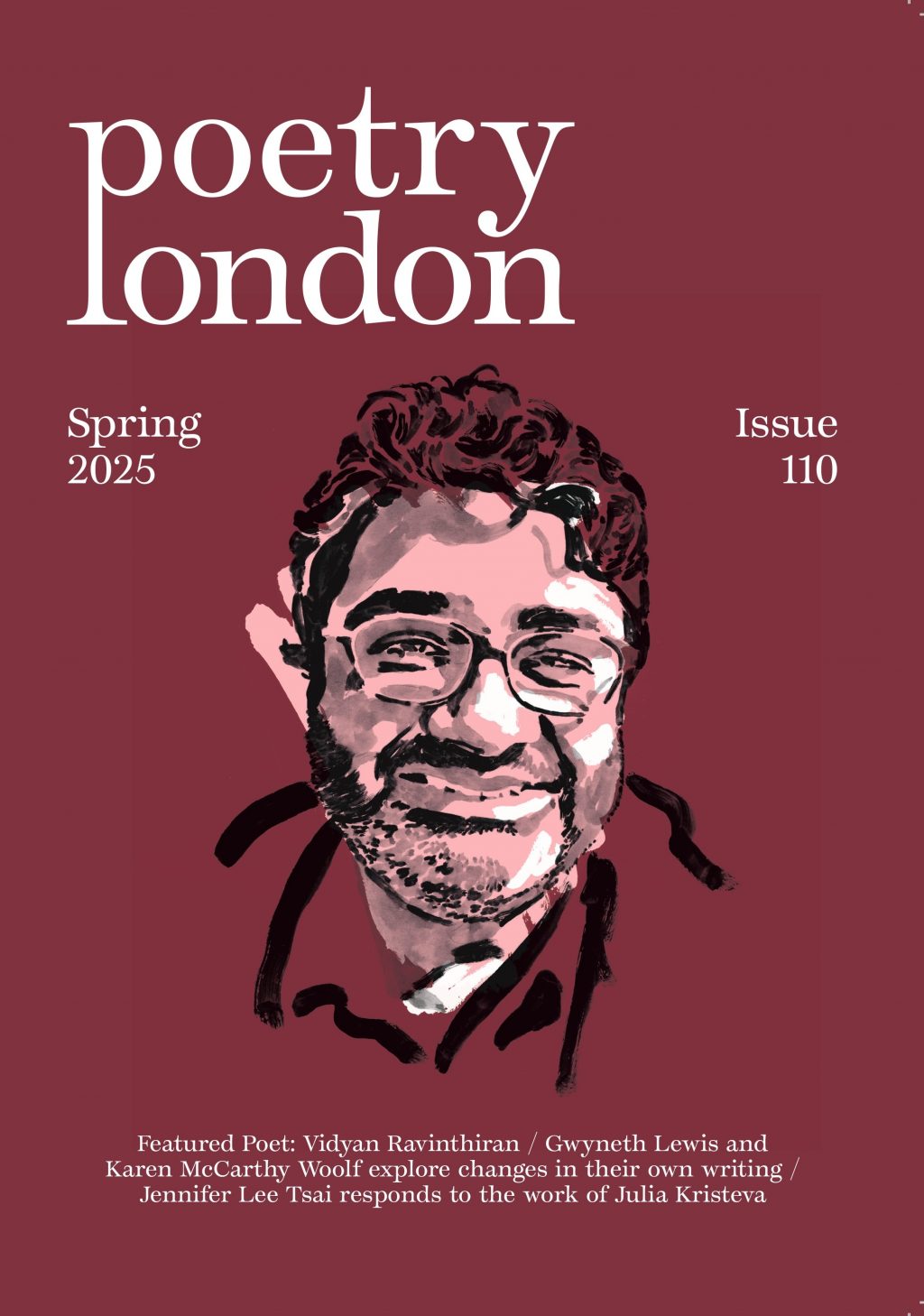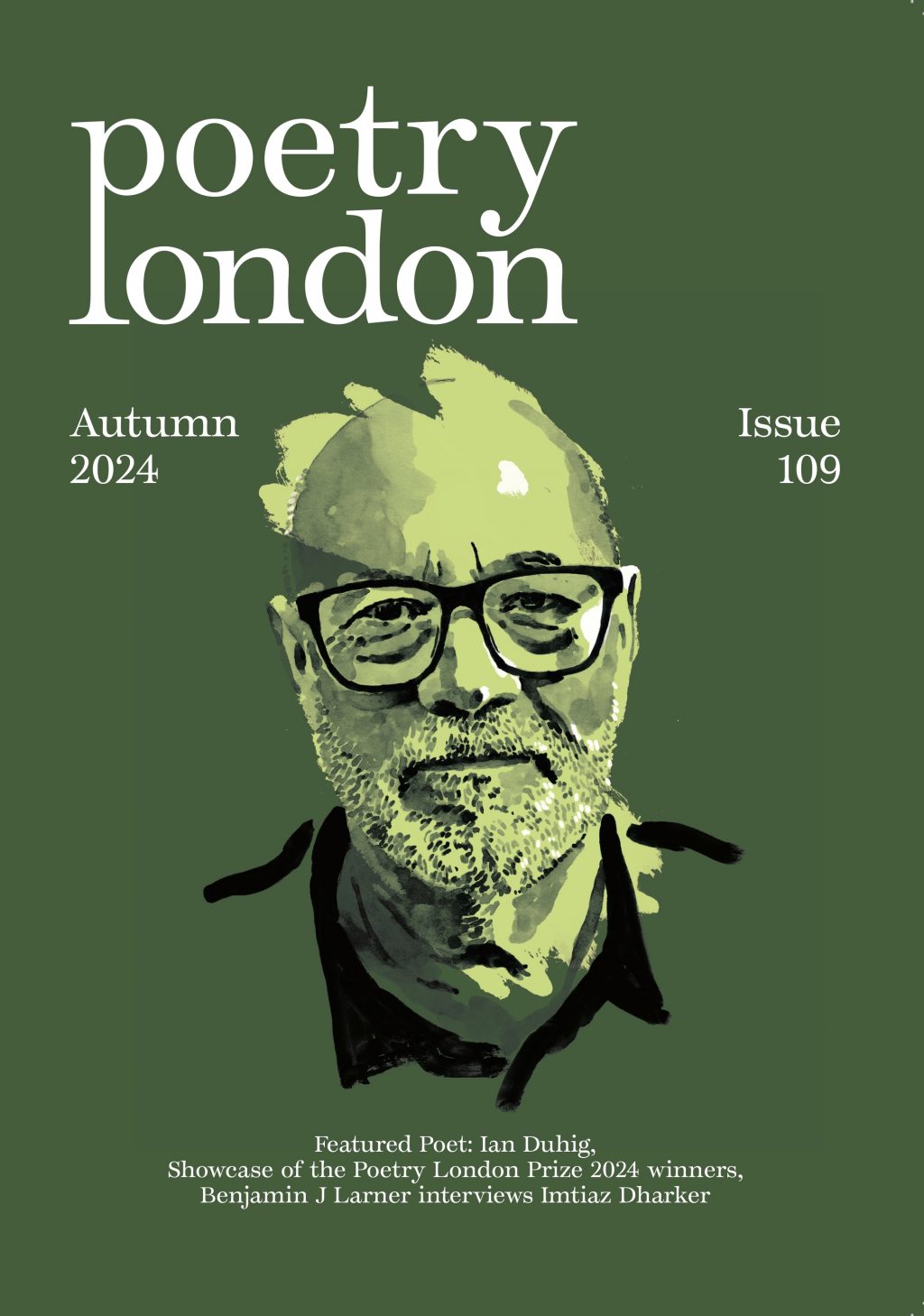Garlands of History
Jack Belloli on three collections that use inventive modes to interrogate and envision beyond imperial violence
Jack Belloli
The two historical narratives that Ishion Hutchinson braids together in his book-length poem, School of Instructions, are twin educations, each charged with violence. The older history is of the tens of thousands of West Indian soldiers, all volunteers, who fought the British army’s Middle Eastern campaign during the First World War: ‘schools of instructions’ provided their training in new military technologies. But the violence that they are taught to wield is eclipsed by the violence suffered as they acquire it. The training that appears to have been most applied is ‘intensive digging’. These men were ‘mortared to haul martyrs from mud trenches’ that they had dug: the consonance pithily exposes the racism of the West’s selective grief for the War’s casualties. In the archival evidence which Hutchinson draws on, men only become distinguishable as anything other than the collective number of deployed bodies when they die, whether from immolation, pneumonia, or firing squad for desertion. In a rare moment when a private’s own words surface, it is to tell the courts that he wasn’t offered medicine.
Hutchinson has explained that he introduced his second narrative to make up for that archival silence, its presentation of Caribbean men only as subject to imperial force. He introduces Godspeed, a fictional boy whose childhood in the independent Jamaica of the 1990s overlaps with the author’s (and who has ‘the birth defect name of Ishi’). Godspeed’s formation as a more independent subject, both conditioned by force and capable of defiant agency, is shaped by cultural memory of his combatant forebears: he acquires his nickname as he chases after a runaway flag during a remembrance parade, and he returns inquisitively to the ‘[b]rittle Bible sheets of his Britannica’ which ‘ached countries under his thumb’. These apparently flighty or fragile images which suddenly reveal their weight – like the flag that rises like both ‘a kite’s tail’ and ‘a headstone, accusing God’ – match the poem’s tone, by turns bleak and zany. In the playground’s ‘small wars’, historical atrocity can be parodied but still, thereby, perpetuated: Godspeed ‘spray[s] Baygon up his cousin’s nostrils’ for failing to pronounce the early anti-colonial critic Bartolomé de las Casas’s name correctly.
The beating of imperial legacies into Godspeed at school is literal, from a teacher wielding a ‘cat-o’-nine-tails’, but also literary: through Shakespeare, Wordsworth, ‘mangling the words “Dulce et decorum est”’ (‘XVIII’). Along with depicting Godspeed’s ambivalent response towards the metropole’s canon, School of Instructions also executes one for itself, specifically towards some British late modernists equally invested in layering historical narratives. Hutchinson employs the ‘versets of rhythmical prose’ in which Geoffrey Hill composed Mercian Hymns, but now mangling their rhythm to echo musical cultures of the Black Atlantic (‘I-Bop-I-own-the-trumpet’) rather than Old English monosyllables. The US edition’s cover, and the Faber edition’s font, make it especially clear that Hutchinson is responding to David Jones’s long poem The Anathemata. Jones was inspired by a sudden visionary comparison of soldiers he saw in British-occupied Palestine with those of Christ’s time. For Jones, these recurrences reveal a transcendent typological order to history, made legible in Catholic liturgy; for Hutchinson, they remain up for endless, quotidian reappropriation, as Godspeed keeps ‘invert[ing] Zion into noise’. A ‘skanking natty dread at the bus depot’ tells Godspeed ‘that Jesus was of no place but here and touched his chest’; his friend makes a mock-priestly breastplate ‘Urim and Thummim’ from ‘two flattened Coca-Cola corks’. In very different registers, the foundational religious histories of the Middle East – forged under another set of clashing empires – remain a flexible, useable past for Black spirituality and struggle.
By seeding these reappropriating strategies throughout, Hutchinson incrementally builds a more collective, consistent picture of anti-colonial resistance as the very substance of history, uniting not only Godspeed and the soldiers but also their ancestors on the Middle Passage: the book’s opening lyrics are haunted by names of slave ships and ‘flashes of sharks’. When this continuity is recognised, history can be transformed, as in the Psalms, from a confrontation with inevitable lament to an opportunity for praise, the note on which the book explicitly ends.
By presenting all this in Hill’s and Jones’s monumental formalist terms, Hutchinson confronts ‘ENGLAND […] God’s saved and saving nation’ with a counter-pedagogy. It is England which must, according to the book’s closing ‘emblems’, ‘leave room for the beloved below; / recover them all, for belated praise’. Hutchinson’s historical vantage does not extend to the occupation of Palestine after the First World War, but it is hard to miss how colonial legacies continue to shape understandings of who is grievable, who capable of ‘saving’ themselves, there today. In early 2024, a line about ‘fireworks going off faint and distant N. OF GAZA’ in the 1910s is a reminder of how much still needs to be learned.
Hutchinson’s project got me thinking about the kinds of learning experience I confronted in the other two collections under review. Lutz Seiler’s Pitch & Glint occasionally returns to feverish memories of the classroom. In ‘bugs’, ‘Little squirt[s]’ find themselves swallowing, or transformed, into insects as they are told to ‘shut [their] mouths and sing’ nursery rhymes; the long final poem opens with glancing references to the set texts of Seiler’s childhood by Chingiz Aitmatov, Nikolai Ostrovsky, and Mikhail Sholokhov. Seiler grew up in the southern mountains of Communist East Germany, where, ‘paralysed before the broadly / cast namelessness / of our liberators’, residents were employed to extract uranium for the Soviets at great human and environmental cost: Seiler’s childhood home of Culmitzsch was literally undermined and evacuated. As in Hutchinson’s Jamaica, the endurance of systemic violence can work itself out in ways that are darkly comic: according to translator Stefan Tobler’s notes, Seiler’s grandfather’s exposure to radiation left him able to generate static by waving his hand in front of the radio. But whenever this anecdote appears to echo within the collection itself, in its uncanny images of technologised bodies – a woman’s ‘cough’ that ‘shone down the narrow / stairs on us’, his father’s ‘heart’s / signal box’, ‘the radio-child with tubes and relays’ – the tone is more bitterly muted.
Seiler’s style is an attempt to articulate the violence in a childhood that may only have pluperfectly been recognised as such by bringing readerly disorientation to the fore. The collection refuses to settle either into regular rhythmic patterns or coherent images and landscapes; poems are closed by the abrupt repetition of phrases with which they began, without the quality of a refrain. This is another kind of late modernist project, one that feels, at times, like a strange hybridisation of different tendencies within Samuel Beckett’s work: as if the more Romantic, cradling quality of some of his short lyric poems were suddenly interrupted by the vulgar particularities of his prose. The effect is to generate poems full of bodies stumbling towards walking:
it rises up it passes soon going down the road. only a sudden staticky hiss whatever the frequency so not with standing you lean into your steps. (‘summing up’)
The disorientation is aided, in this translation, by Tobler’s willingness to be led by the original’s sounds and puns, and thus to reach for wide-ranging and refreshingly twenty-first century word choices: a rundown flat contains ‘a dad-cave of baccy and Activist // Worker’s trophies’ (‘Berlin room’).
It takes patience to be schooled in Seiler’s vision, to attend to exactly how sets of images relate to each other, until apparently incongruous combinations stand revealed as the vanished stuff of East German miners’ daily life. I required Tobler’s notes to work out what was going on here:
bottles, first off heavy and hard to let go, then empty buried in rats’ holes, their necks whistling towards the Western moon. (‘Great Berlin, one’)
I’d assumed that the necks were the exposed throats of killed rats – partly given a subsequent reference to ‘rat-bashing’, but also to the persistence of violence against animals throughout these poems, right from the first’s ‘pulverised swallows’ (‘mechanics of the pictorial world’). But it is, grammatically, the bottles’ necks that whistle: when they were buried facing the wind, the sound would drive away rodents. Subsequent poems allow household objects from Seiler’s childhood – an illuminated model ship, a woman’s hairpiece ‘on its pale / polystyrene head’ (‘I’m tired’) – to be recovered in luminescent detail: we discover that it’s the strategies of surrealism which ultimately give the most honest account of a community which history has rendered unimaginable.
Like Seiler, Kwame Dawes is confident that ‘it is not / the winners who garland history / but the poets’, ‘we the silenced / and erased ones’ who keep recovering histories lost to colonial violence (‘Against Erasure’). This cri de coeur comes at the end of the third section of Sturge Town, a collection which is elsewhere as heavy with ‘bones restless in the dark soil’ as Hutchinson’s and Seiler’s (and earlier books by Dawes such as Requiem). But to appreciate the very different tone of this book overall – and the different learning process that it dramatises and invites – it is worth turning to the two poems which bookend its second section, largely dedicated to elegies or refused elegies for family members. Each repeats the same spectral encounter from a different perspective. First, Dawes imagines himself as a pained ‘clumsy journeyman’ briefly meeting a fellow pilgrim heading the other way ‘towards the light’ (‘It Bruises, Too’). Then he imagines how ‘the drama enacts itself’ when viewed from above by ‘a peace-loving drone’, and reveals that this is the perspective which he first remembers himself imagining (‘After “It Bruises, Too”’). The drone’s superior, ‘far-seeing eye’ would apparently make it comparable to ‘the eye of the poet’ – but Dawes ponders what is lost by not embracing ‘the disquiet of being / a small creature moving slowly through the world’.
If the poetic work of reclamation is an endless one, it must extend into the practices of daily and private creatureliness, including – as Dawes mentions elsewhere in ‘Against Erasure’ – ‘the deep / silence of the family’, where ‘the quiet are not / always voiceless’. His experience of returning to his ancestral home in north Jamaica, now in his early sixties and ‘prodigal’ after many years in the US, has renewed his attention to the ways in which he and his family have continued to refuse erasure, in ways that are quietly faithful without being quietist. Perhaps ‘there are no ghosts here’, or perhaps the ghosts have become ambivalent background presences: in ‘The Man in the Blue Coat’, Dawes imagines the revolutionary Toussaint L’Ouverture walking serenely, ‘too far away to hear’, in the Nebraska twilight. At a more personal level, ‘the persistence of [the] wounds of loss’ of a mother and sister, or the ‘mould, / verdant and persistent’ in a cemetery, can be matched by the ‘steady persistence’ of a father’s love for him and the ‘persistent things’ that his poet-son makes in response. By the end of the collection, the ‘broken, shattered plates / of ancient rock still there in the cold dawn light’ have become a metaphor less for the unspeakable weight of historical shatterings, but for the loving relationships that allow them to be endured through darkness.
The emphasis in Sturge Town, then, is less on late modernist experimentations with perspective than on its author’s increasing sense of personal lateness: of the discoveries that can only be made by a subject enduring over time and its ‘impolite fragility’ becoming increasingly apparent. If this collection carries an implicit pedagogy – and I certainly haven’t been this surprised by the moment-to-moment experience of reading a collection in a long time – it lies in the invitation to listen in on the shifts that Dawes rehearses in his own experiences of love, mourning, and (up)rootedness, and to reflect on how they relate to my own. Whose are the familiar voices, ‘ordinary as rain, speaking your name’ (‘In This Saying’), that I need to make space for, as Dawes does for his wife Lorna as he ends the book, in order to keep that fragility acknowledged? This teaching matters because Dawes admits that our private persistence amid disquiet will only be sustained if it becomes a collective, practical project: one that will ultimately require solidarities beyond those internal to families, nations, or fellow poets. We just have to be ready to taste it.
To hold ourselves intact, we must close our eyes and imagine green, and then, for sustenance, drag our tongues across each other’s foreheads, to taste the salt and sweet of our hope. (‘The Remnant’)
Jack Belloli’s writing on contemporary poetry has appeared in Poetry London, The Poetry Review, Religion and Literature and elsewhere. His pamphlet Spandrel Routine was published by Broken Sleep Books in 2019.
